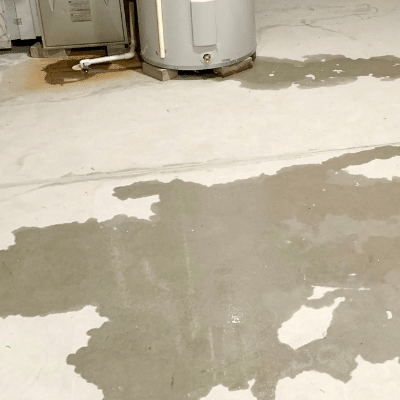If you’ve ever had water seep into your basement, noticed damp walls, or seen mysterious cracks in your foundation—hydrostatic pressure could be to blame. It’s a common but often overlooked issue that affects many homes in Nebraska and Iowa, especially after heavy rainfall or snowmelt. So what exactly is hydrostatic pressure, and why does it matter for your home?
Let’s break it down.
What Is Hydrostatic Pressure?

Hydrostatic pressure is the force that standing water exerts on the surfaces it touches. In the case of your home, that means the soil around your foundation. When the ground becomes saturated with water—from rain, snowmelt, or poor drainage—it presses against your basement walls and floors.
Water is heavy. Just one cubic foot of water weighs over 60 pounds. Multiply that by the amount of saturated soil around your foundation, and your basement walls could be holding back thousands of pounds of water pressure.
Why Should You Care About Hydrostatic Pressure?
Hydrostatic pressure isn’t just a physics term—it can have real and expensive consequences for your home:
1. Basement Water Seepage
Even if your foundation looks solid, hydrostatic pressure can push water through tiny cracks or even porous concrete. That moisture ends up inside your basement, leading to musty smells, mold growth, and damage to your belongings.
2. Foundation Cracks and Structural Stress
Too much pressure over time can cause cracks in your walls and floors. Horizontal cracks, in particular, can be a warning sign that your foundation is under stress and may be shifting or bowing.
3. Bowed or Buckling Basement Walls
This is one of the more serious symptoms. If hydrostatic pressure is left unaddressed, it can cause basement walls to lean or bulge inward, which may eventually lead to structural failure.
What Causes Hydrostatic Pressure Around a Home?
Here are some common culprits in Iowa and Nebraska:
- Heavy Rainfall or Snowmelt These regions frequently experience both. Saturated soil increases pressure against foundation walls.
- Poor Drainage Clogged gutters, short downspouts, and improper grading can cause water to pool around your home.
- Clay Soils Much of Nebraska and Iowa has expansive clay soil that holds water and increases hydrostatic pressure.
- Missing or Faulty Drainage Systems No sump pump? No interior or exterior drainage? That means more water has nowhere to go.
How Can You Relieve Hydrostatic Pressure?
The good news is that hydrostatic pressure can be managed with the right waterproofing systems in place:
Interior Drainage Systems
Installed beneath the basement floor to catch and channel water into a sump pump.
Sump Pump Installation (with Backup)
Removes water buildup from inside your foundation before it can cause damage.
Exterior Drainage & Grading Fixes
Proper grading and extended downspouts can help direct water away from your home.
Waterproof Membranes & Vapor Barriers
Add another layer of defense to keep moisture from penetrating foundation walls.
Do You Suspect Hydrostatic Pressure Problems?
If you’re seeing signs like musty smells, damp walls, foundation cracks, or water on the basement floor, don’t wait. Hydrostatic pressure doesn’t just go away—it builds over time.
At Jerry’s Waterproofing, we’ve been helping Iowa and Nebraska homeowners fight back against foundation damage and basement water issues for decades. We can inspect your home and recommend the right drainage and waterproofing solutions based on your property’s layout and soil conditions.
Contact Jerry’s Waterproofing today to schedule an inspection or learn more about protecting your home from hidden water pressure problems.



